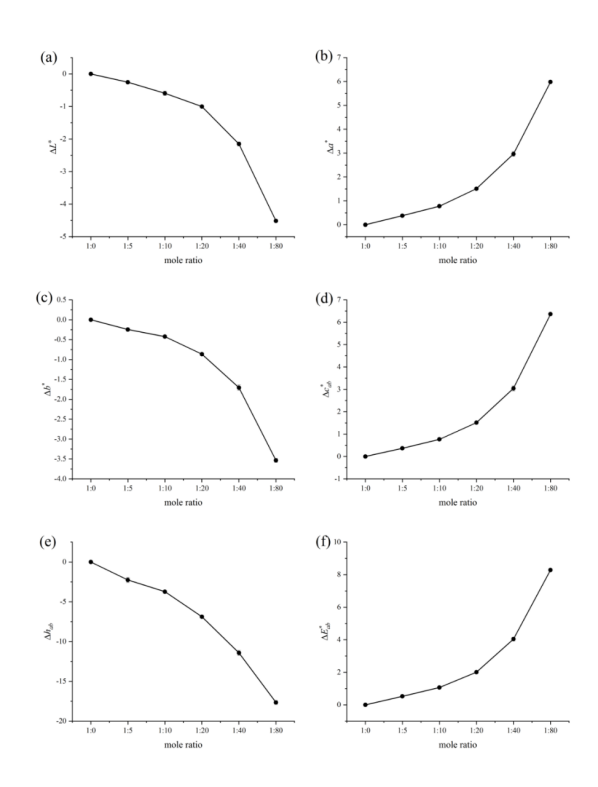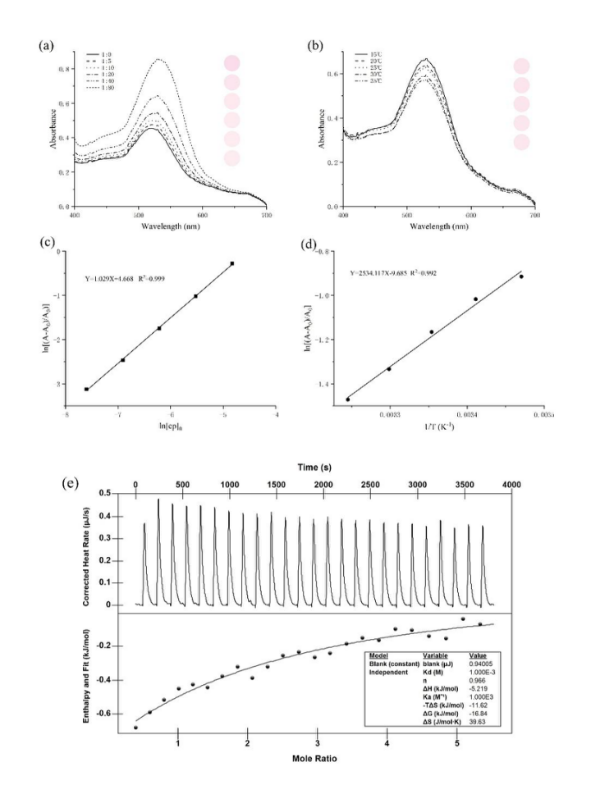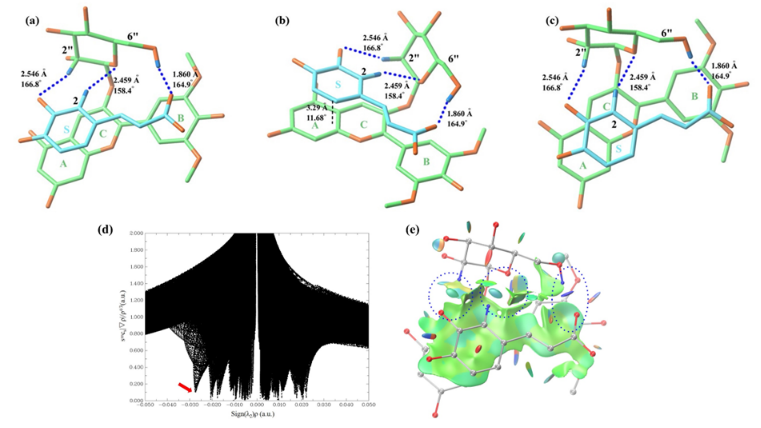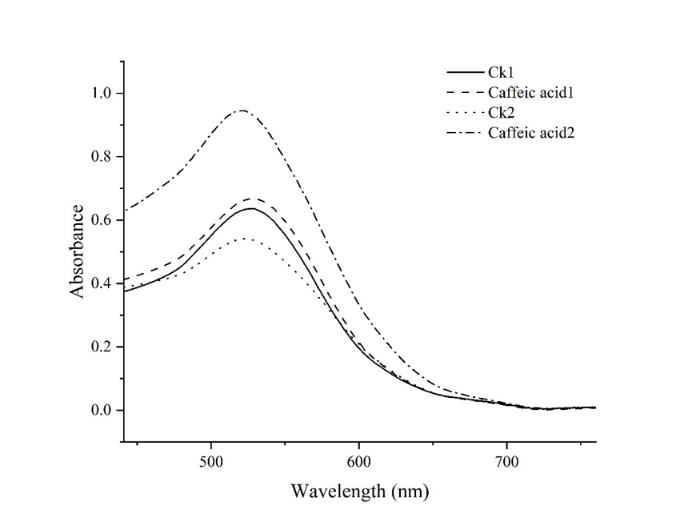近期,西北农林科技大学XX学院科研团队课题组依托西安计算中心提供的计算平台,解析咖啡酸与二甲花翠素-3-O-葡萄糖苷之间的分子互作机制,探究其辅色机理,在这项研究中取得了新的进展。该研究结果在国际TOP学术期刊《Food Chemistry》上发表,并对西安计算中心进行致谢。
《Intermolecular interactions between malvidin-3-O-glucoside and caffeic acid: Structural and thermodynamic characterization and its effect on real wine color quality》
《从结构、热力学特征和在真实酒中的影响探究二甲花翠素-3-O-葡萄糖苷与咖啡酸的分子间相互作用》
研究背景:
葡萄酒因其复杂的风味特性和潜在的健康价值而受到众多消费者的喜爱,是我国酒精饮料市场的重要组成部分。颜色作为红葡萄酒最直观的感官品质,是影响消费者最主要因素之一。一直以来,我国多产区葡萄酒都受到颜色过快衰退的的困扰,如何提升稳定红葡萄酒的颜色是产业难题之一。
研究目的:
解析咖啡酸与关键颜色成分花色苷之间的互作机制,探究在不同发酵阶段添加咖啡酸对干红葡萄酒颜色的影响。革新葡萄酒色泽调控理论,为解决我国红葡萄酒颜色过快老化提供理论依据。
研究方法
本研究依托西安计算中心,利用QM计算方法解析咖啡酸与二甲花翠素-3-O-葡萄糖苷互作的驱动力,结构特征和关键基团。与测试得到的热力学参数结合,明晰互作机制。在发酵不同阶段添加咖啡酸,从颜色特性、辅色效果和酚类特征等方面系统评估不同添加时间的异同,优化实际应用时的添加方案。
研究结果
研究结果表明,咖啡酸和二甲花翠素-3-O-葡萄糖苷之间的辅色反应是由氢键和色散力驱动的自发放热反应。计算表明,二甲花翠素-3-O-葡萄糖苷的糖基基团和咖啡酸酚羟基是关键的活性位点。在酒精发酵后添加咖啡酸可改善葡萄酒的颜色特征。
研究结论
本研究结果解析了咖啡酸与花色苷的辅色机理,是颜色调控的理论创新,为提高红葡萄酒颜色品质提供了理论基础

Figure 1 CIELAB parameters (▲L*,▲a*,▲b*,▲C*ab,▲h*ab and▲E*ab ) of malvidin-3-O-glucoside/caffeic acid at different mole ratios.
图1. 模拟酒中二甲花翠素-3-O-葡萄糖苷/咖啡酸酸在不同比例下的CIELAB参数

Figure 2.Visible spectra and color feature of malvidin-3-O-glucoside/caffeic acid solutions at different molar ratios at 293K(a); visible spectra and feature color of malvidin-3-O-glucoside/caffeic acid solutions (1:40 molar ratio) at the temperature ranging from 15 to 35℃(b); plots of ln [(A-A0)/A0] vs ln[CP]0 for the copigmentation reactions(c); plots of ln [(A-A0)/A0] vs (1/T) for the copigmentation reactions(d); ITC titration of malvidin-3-O-glucoside (0.2 mM) with caffeic acid (4 mM)(e).
图2. 模拟酒中二甲花翠素-3-O-葡萄糖苷/咖啡酸在不同比例(a)和不同温度(b)下的可见吸收光谱;辅色反应根据ln[(A-A0)/A0] vs ln[CP]0(c)和ln[(A-A0)/A0] vs (1/T)(d)的回归方程计算热力学参数;二甲花翠素-3-O-葡萄糖苷(0.2mM)和咖啡酸(4mM)的ITC滴定曲线(e).

Figure 3 Front (a), side (b) and top (c) views of the most stable conformer 1 of the complex of malvidin-3-O-glucoside and caffeic acid. A tube molecular representation is adopted. Carbon atoms are colored in green for malvidin-3-O-glucoside and in cyan for caffeic acid. Oxygen and hydrogen (involved in hydrogen bonds) atoms are depicted in red and blue, respectively. HBs, presented in blue dashed lines, are exhibited with key parameters. The stacking distance and dihedral between malvidin-3-O-glucoside rings and gallic acid ring or caffeic acid are also included. Visualization of non-covalent interactions in complex 1 of the complex of malvidin-3-O-glucoside and caffeic acid. (d) is a plot of the reduced density gradient versus the electron density multiplied by the sign of the second Hessian eigenvalue. (e) is the gradient isosurface (s=0.5 au), which is colored on a blue-green-red scale according to values of sign(λ2)ρ, ranging from -0.02 to 0.02 au. Blue indicates strong attractive interactions, and green indicates weak interactions, and red indicates strong non-bonded overlap.
图3. 二甲花翠素-3-O-葡萄糖苷/咖啡酸复合物最稳定构象 1 的正视图(a)、侧视图(b)和俯视图(c);构象 1 中非共价相互作用的可视化(a,b)。(d)是还原密度梯度与电子密度乘以第二个 Hessian 特征值符号的关系图。(e) 是梯度等值面(s=0.5 au),根据符号(λ2)ρ的值从-0.02 到 0.02 au以蓝绿红三色标示。蓝色表示强吸引力相互作用,绿色表示弱相互作用,红色表示空间位阻效应.

Figure 4. Visible spectra of real wines with the caffeic acid added before fermentation (Caffeic acid1, Ck1 as the control group) and after fermentation (Caffeic acid2, Ck2 as the control group)
图4.发酵前添加组(Caffeic acid1, Ck1)和发酵后添加组(Caffeic acid2, Ck2)的可见光吸收曲线。
